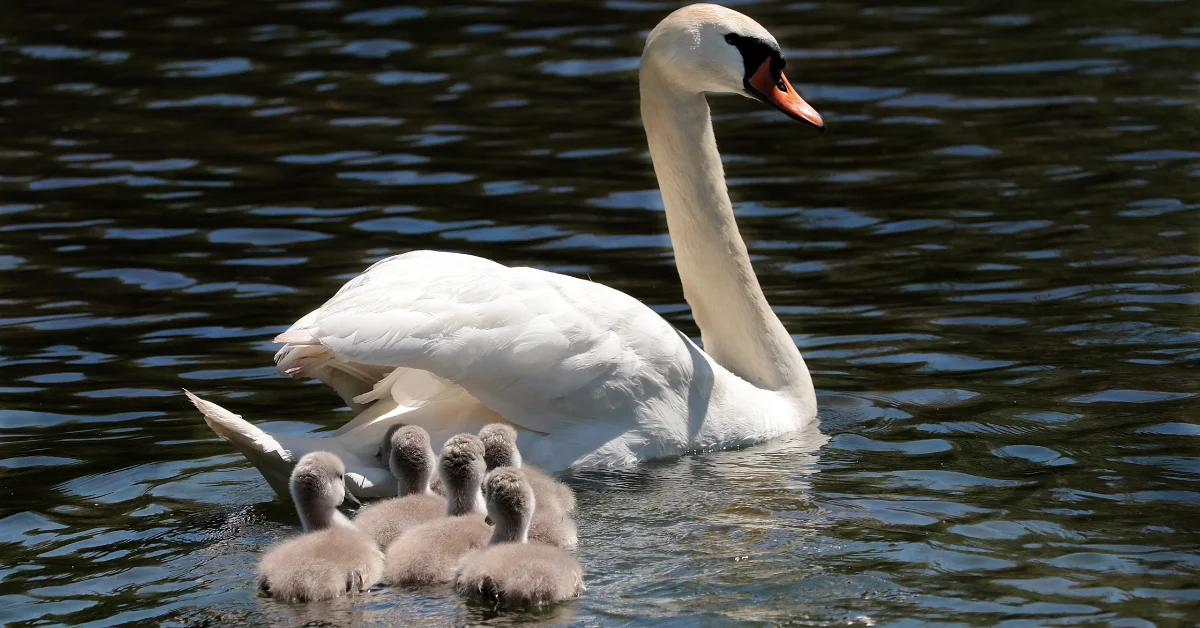Swan Bird – Swans are water birds closely related to ducks and geese. These birds can move and swim gracefully in both water and air. They have two beautiful wings on their bodies that add to their beauty, which have appeared prominently in heralds and motifs for centuries The swan Bird life cycle is also very strange.
According to the report, swans are very intelligent and devoted birds. These birds stay with their partners for their entire life and are capable of aggressively protecting their children.
Grey Tree Frog- Taxonomy, Diet, Facts and Reproduction, Habitat
Scientific Name and Information of Swan Bird
| Kingdom | Animalia |
| Phylum | Chordata |
| Class | Aves |
| Orders | Anseriformes |
| Family | Anatidae |
| Genus | Cygnus |
| Species | Cygnus Cygnus |
Common Types of Swan Bird Species
There are some species of swans which are very easy to identify.
- Black Swan
- Black Necked Swan
- Bewicks’s Swan
- Trumpeter Swan
- Whooper Swan
- Whistling Swan
- Mute Swan
- Tundra Swan
Physical Description and Appearance
| Length | 4-5 ft (1.4-1.5 m) |
| Weight | 25-35 pounds (11.3-15.9 kg) |
| Wingspan | 10 ft (3.1 m) |
Body and Colouration :Depending on the size, swan’s have a patch of featherless skin between their eyes and beak. The beak also has serrated edges that look like teeth but are not teeth. Male swans are usually larger and heavier than females.
The beaks of black and black-necked swans have red and black patterns, whereas the beaks of other swans have black and yellow patterns. This pattern makes these swans attractive.
According to the report, some male and female mute and black-necked swans have a fleshy lump on their beak near the head which is knob-like.
Diet of Swan Bird
Swans may be primarily omnivorous but they mostly eat algae, fruits, grasses, leaves, roots, stems and tubers. They sometimes also include insects and small aquatic animals such as fish and amphibians in their diet. These birds are also known to feed on both land and water, that is, they are able to eat food from both land and water.
Swan’s Behaiviour
Swans display a variety of behaviours depending on their species. Here are some common swan behaviours:
- Territorial and protective: Swans are quite territorial and protective. During the breeding season they become particularly protective of their nests, mates and cygnets, showing their parental care. They may hiss and fluff their wings and even twist their necks to ward off intruders.
- Floating and moving around: Swans spend their day swimming in the water, moving around in search of food, and also walking on land.
- Graceful flying ability: Swans are excellent at swimming as well as flying. They can reach speeds of up to 60 miles per hour as they travel in search of milder weather. They propel themselves with their feet to fly, making them one of the heaviest flying birds.
- Communication: Swans communicate by nodding, calling and other gestures. Head-bobbing is common during pair bonding, territorial disputes and family interactions. It intensifies just before flying together.
Adaptations of Swan Birds
- Like other water birds of this species, swans have webbed feet to aid in swimming.
- They have an oil-producing gland on their tail, which helps keep their feathers waterproof. They spread this oil all over their body by shaking their tail, due to which water droplets on the swan’s body immediately fall off the feathers.
- The body of these birds functions in both aquatic and aerial environments, which provides them with adaptations to live in both places.
- Their long necks enable swans to search for their food without submerging their bodies in water.
Which predators hunt them?
The main threat to these swans are foxes and coyotes living in the surrounding forests and bushes, although young and weak birds are very easy to target. Talking about the threat to their eggs, raccoons easily prey on them and eat them.
How do they reproduce
Swans are waterfowl that depend heavily on aquatic environments and prefer to inhabit a variety of habitats including freshwater lakes, ponds, slow-moving rivers, wetlands, marshes and coastal waters. When nesting, these beautiful aquatic birds usually choose locations close to water to nest.
Life Span of Swan Birds
A swan can live for about 12 years. Their lifespan varies from one species to another, such as the trumpeter swan can live for more than 20 years.
Interesting Facts of the Swan Birds

Here are some fascinating facts about swans:
- Monogamous bond: An interesting fact about swans is that once they find a partner, they stay together for the entire duration of their life, which shows the bond between them.
- Superb flying: Swan Bird are excellent fllier despite their large size. They can reach speeds of up to 60 miles per hour during migration. Their wingspan can be more than 7 feet, which enables them to fly impressively.
- Cygnets and parenting: Swan Birds that are in their infancy are called cygnets. Swans take great care of their babies and protect them. Swans carry their babies, called cygnets, on their backs while swimming.
- Vocalisations: Swans communicate through a variety of sounds. Their iconic trumpet call can be heard across the water. When they get excited, they shake their heads and hiss.
- Symbolism: Swans represent a symbol of beauty, love and transformation in many cultures. They find their presence in myths, fairy tales and classical literature.
Reference-Wikipedia
https://bytica.net/swan-bird-life-span/